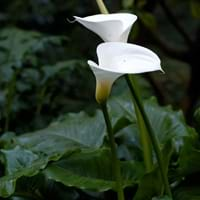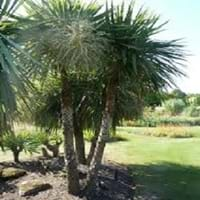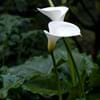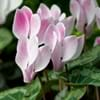Life Span
Perennial
Perennial
Type
Bulb, Flowering Plants
Broadleaf Evergreen
Origin
South Africa, Swaziland
New Zealand
Types
Passionfruit, Fire glow, Gem rose, Blaze, Crystal blush
Not Available
Number of Varieties
Not Available
Habitat
Swamps
Coastal Regions
USDA Hardiness Zone
8-10
8-11
AHS Heat Zone
10-4
Not Available
Sunset Zone
2a, 2b, 5, 6, 8, 9, 12, 13, 14, 15, 16, 17, 18, 19, 20, 21, 22, 23, 24
21,22
Habit
Clump-Forming
Upright/Erect
Flower Color
Blue, Dark Purple, Light Purple, Red, White
White
Flower Color Modifier
Bicolor
Bicolor
Fruit Color
Not Available
White, Blue
Leaf Color in Spring
Dark Green
Burgundy, Dark Red, Copper
Leaf Color in Summer
Green, Dark Green
Burgundy, Dark Red, Copper
Leaf Color in Fall
Green, Dark Green
Burgundy, Dark Red, Copper
Leaf Color in Winter
Green, Dark Green
Burgundy, Dark Red, Copper
Leaf Shape
Arrowhead
Long Narrow
Plant Season
Autumn, Spring, Summer
Spring, Summer, Fall, Winter
Sunlight
Full Sun, Part sun, Partial shade
Full Sun, Partial Sun, Partial shade
Type of Soil
Clay, Loamy
Loam, Sand
The pH of Soil
Neutral, Slightly Acidic
Neutral, Alkaline
Soil Drainage
Average
Well drained
Bloom Time
Spring, Summer
Late Spring, Early Summer, Summer
Tolerances
Wet Site
Drought, Salt
Where to Plant?
Container, Pot
Ground
How to Plant?
From bulbs, From Rhizomes, Seedlings, Transplanting
Stem Planting, Transplanting
Plant Maintenance
Medium
Medium
Watering Requirements
Over-watering can cause leaf problems or root diseases, Requires a lot of watering
Average Water Needs
In Summer
Lots of watering
Lots of watering
In Spring
Moderate
Moderate
In Winter
Average Water
Average Water
Soil pH
Neutral, Slightly Acidic
Neutral, Alkaline
Soil Type
Clay, Loamy
Loam, Sand
Soil Drainage Capacity
Average
Well drained
Sun Exposure
Full Sun, Part sun, Partial shade
Full Sun, Partial Sun, Partial shade
Pruning
Prune to stimulate growth, Remove dead or diseased plant parts, Remove deadheads
Prune if you want to improve plant shape, Remove damaged leaves, Remove dead leaves
Fertilizers
All-Purpose Liquid Fertilizer
All-Purpose Liquid Fertilizer
Pests and Diseases
Armillaria mellea, Gray mold, Leaf spot, Powdery mildew, Pythium rot, Rhizoctonia crown rot, Root rot, Thripes
Red blotch
Plant Tolerance
Drought
Drought
Flowers
Yes
Insignificant
Flower Petal Number
Single
Single
Foliage Texture
Coarse
Coarse
Foliage Sheen
Glossy
Not Available
Attracts
Not Available
Caterpillar, Moths
Allergy
Diarrhea, Intestinal gas, Vomiting
Asthma
Aesthetic Uses
Beautification, Bouquets
Beautification, Landscape Designing, Showy Purposes
Beauty Benefits
Not Available
Not Available
Environmental Uses
Air purification
Air purification
Medicinal Uses
Not Available
Diabetes, Dysentry, Stomach pain
Part of Plant Used
Flowers
Leaves, Root, Stem
Other Uses
Showy Purposes
Decoration Purposes, Employed in herbal medicine, Showy Purposes, Used As Food, Used as Ornamental plant
Used As Indoor Plant
No
No
Used As Outdoor Plant
Yes
Yes
Garden Design
Not Available
Container, Feature Plant, Foundation, Houseplant, Screening, Wind Break, Tropical
Botanical Name
Zantedeschia Aethiopica
CORDYLINE australis 'Red Star'
Common Name
Calla Lily
Cabbage Palm
In Hindi
Calla Lily
गोभी पेड़
In German
Calla-Lilien-
Cabbage tree
In French
Lys calla
arbre de chou
In Spanish
Cala
árbol de la col
In Greek
Calla κρίνος
λάχανο δέντρο
In Portuguese
Calla
repolho árvore
In Polish
Calla Lily
kapusta drzewo
In Latin
Calla Lilium
brassica ligno
Phylum
Magnoliophyta
Magnoliophyta
Class
Liliopsida
Liliopsida
Order
Alismatales
Asparagales
Family
Araceae
Asparagaceae
Genus
Zantedeschia
Acidosasa
Clade
Angiosperms, Monocots
Angiosperms, Monocots
Tribe
Zantedeschieae
Not Available
Subfamily
Aroideae
Lomandroideae
Season and Care of Calla Lily and Cabbage Tree
Season and care of Calla Lily and Cabbage Tree is important to know. While considering everything about Calla Lily and Cabbage Tree Care, growing season is an essential factor. Calla Lily season is Autumn, Spring and Summer and Cabbage Tree season is Autumn, Spring and Summer. The type of soil for Calla Lily is Clay, Loamy and for Cabbage Tree is Loam, Sand while the PH of soil for Calla Lily is Neutral, Slightly Acidic and for Cabbage Tree is Neutral, Alkaline.
Calla Lily and Cabbage Tree Physical Information
Calla Lily and Cabbage Tree physical information is very important for comparison. Calla Lily height is 60.00 cm and width 60.00 cm whereas Cabbage Tree height is 610.00 cm and width 240.00 cm. The color specification of Calla Lily and Cabbage Tree are as follows:
Calla Lily flower color: Blue, Dark Purple, Light Purple, Red and White
Calla Lily leaf color: Dark Green
Cabbage Tree flower color: White
- Cabbage Tree leaf color: Burgundy, Dark Red and Copper
Care of Calla Lily and Cabbage Tree
Care of Calla Lily and Cabbage Tree include pruning, fertilizers, watering etc. Calla Lily pruning is done Prune to stimulate growth, Remove dead or diseased plant parts and Remove deadheads and Cabbage Tree pruning is done Prune if you want to improve plant shape, Remove damaged leaves and Remove dead leaves. In summer Calla Lily needs Lots of watering and in winter, it needs Average Water. Whereas, in summer Cabbage Tree needs Lots of watering and in winter, it needs Average Water.





